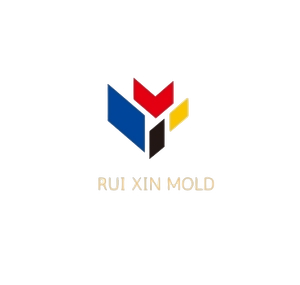Recent Posts
Tags
报错: 未找到这个表单
In the world of composite materials,Thermoset composite materials are a type of composite material that exhibit enhanced properties like high strength, stiffness, and durability. They are widely used in various industries, including automotive, aerospace, and construction, due to their unique characteristics.Sheet Moulding Compound (SMC) and Dough Moulding Compound (DMC) are two types of thermoset composites.
Understanding the differences between SMC and DMC is important when selecting the right material for specific applications. For example, if a manufacturer needs to produce components that require high-strength, SMC is a suitable option. However, if electrical insulation is important, DMC would be the ideal choice.
What is SMC?
**Sheet Molding Compound (SMC)** is a type of **fiber-reinforced polymer composite** that comes in sheet form. It is composed of a mixture of unsaturated polyester resin, chopped glass fibers, fillers, and additives. These ingredients are combined in a sheet-like form, making it easy to handle and feed into high-pressure molding equipment. SMC is known for its **high tensile strength** and **superior durability**, making it suitable for manufacturing **large, complex parts** that need to withstand high levels of stress and wear.
The **high glass fiber content** within SMC is what gives it its structural integrity. The glass fibers are randomly oriented within the material, providing excellent impact resistance and dimensional stability. Due to its robust mechanical properties, SMC is frequently used in the automotive, aerospace, and construction industries where both strength and lightweight characteristics are crucial.

Advantages of SMC:
- Strength: Due to the high fiber content, SMC offers excellent strength-to-weight ratios.
- Dimensional Stability: Parts made from SMC exhibit consistent dimensions, even under stress.
- Corrosion Resistance: SMC parts are resistant to weathering and environmental factors.
- Cost-Effective for Large Volumes: Its sheet form allows for high-speed production, making it ideal for high-volume manufacturing.
Applications of SMC:
- Automotive Body Panels: Car manufacturers use SMC to produce lightweight, impact-resistant body panels.
- Electrical Equipment Housings: Its non-conductive nature makes it a preferred material for electrical enclosures.
- Structural Components: SMC is also used in construction for load-bearing parts in buildings and infrastructure.
What is DMC?
Dough Molding Compound (DMC), also known as Bulk Molding Compound (BMC), is a putty-like composite material. It is made from similar base components as SMC—unsaturated polyester resins and glass fibers—but is mixed into a dough or bulk form rather than sheets. This consistency allows DMC to be molded into intricate shapes and detailed components that require high precision.
Because of its ability to flow into complex mold designs, DMC is often used for producing small, intricate parts with detailed features. It is particularly favored in industries where tight tolerances and high accuracy are required, such as in electrical insulation parts, appliance components, and smaller mechanical parts. Additionally, DMC can be molded with lower pressures compared to SMC, making the manufacturing process simpler for certain applications.
Advantages of DMC:
- Ease of Molding: DMC can fill fine details in molds, making it ideal for small, intricate parts.
- Versatility: Its dough-like consistency allows it to be used in a variety of molding techniques, including injection and compression molding.
- Electrical Insulation: DMC is an excellent insulator, often used in electrical applications.
- Surface Finish: DMC parts often have a smooth surface finish, reducing the need for post-molding finishing processes.
Applications of DMC:
- Electrical Connectors: DMC’s electrical insulation properties make it ideal for connectors, sockets, and switches.
- Tool Handles: It’s used for manufacturing ergonomic and durable handles for hand tools.
- Household Appliances: Many components in kitchen and household appliances, such as control knobs and housings, are made from DMC.
Key Differences Between SMC and DMC
Material Form:
- SMC: Sheet form, making it easier to handle for large part production.
- DMC: Dough-like form, ideal for intricate, smaller components.
Applications:
- SMC: Best suited for large, complex components requiring high strength and durability.
- DMC: Primarily used for small, detailed parts where precision is key.
Mechanical Strength:
- SMC: Offers higher tensile strength due to its higher fiber content, making it ideal for load-bearing applications.
- DMC: Provides enough strength for smaller components but prioritizes moldability and precision over raw strength.
Molding Process:
- SMC: Requires high-pressure molding, typically done using compression molding techniques.
- DMC: Can be molded at lower pressures and is compatible with both injection and compression molding processes.
Choosing the Right Material for Your Application
The decision to use SMC or DMC depends on the specific requirements of the part you are manufacturing. If your project involves large parts that need high mechanical strength, SMC will likely be the better choice. On the other hand, if you are producing smaller, precision parts with intricate details, DMC is the preferred option due to its superior moldability.
Both SMC and DMC play crucial roles in modern manufacturing, providing solutions for different industry needs. By understanding their unique characteristics, manufacturers can choose the right material to improve product quality, efficiency, and performance.
Pickleball is one kinds of SMC application .
AT DGRUIXINMOLD ,WE support Customizable Carbon Fiber or Fiberglass Surface Pickleball Rackets for Men Women. contact us here
